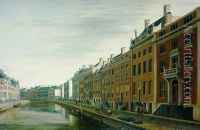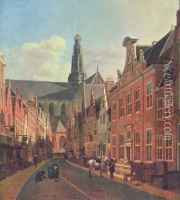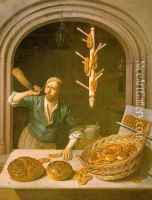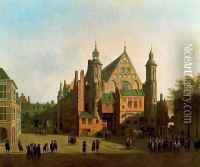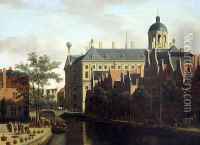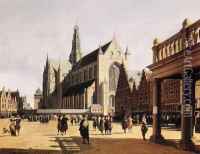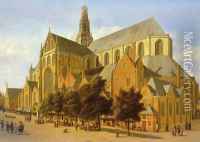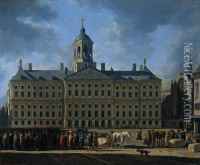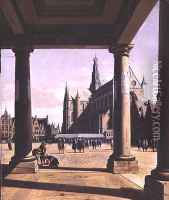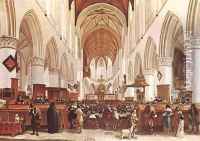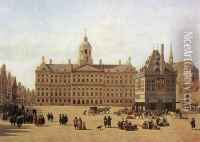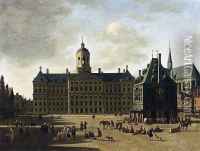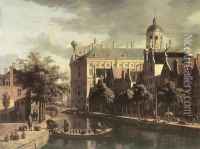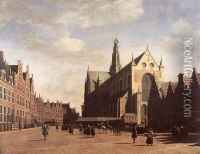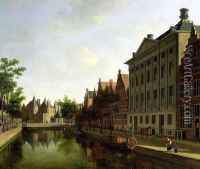Gerrit Adriaensz Berckheyde Paintings
Gerrit Adriaensz Berckheyde was a Dutch Golden Age painter, born in Haarlem, Netherlands in 1638. He is best known for his detailed and atmospheric paintings of cityscapes and architecture, which capture the essence of Dutch urban life in the 17th century. Berckheyde was the younger brother of the painter Job Adriaensz Berckheyde, with whom he likely trained. Together, they are often credited with developing a refined style of cityscape painting that was unique to Haarlem.
Gerrit Berckheyde's early work was influenced by his elder brother and also by artists such as Jacob van Ruisdael and Pieter Saenredam, who were known for their depictions of buildings and city views. Berckheyde's focus on light, clarity, and perspective was a hallmark of his work, setting him apart from his contemporaries. His paintings often featured the streets and squares of Dutch cities, including Amsterdam, Haarlem, and The Hague, depicted in a calm and orderly manner.
Among Berckheyde's most famous works are his paintings of the Grote Markt in Haarlem and the Amsterdam town hall on Dam Square. These works are celebrated for their accurate representation and the way they convey the civic pride of the Dutch Republic during its Golden Age. Berckheyde's attention to detail extended to the portrayal of daily life, as his cityscapes are populated with figures going about their everyday business, adding a lively and human element to the urban landscapes.
Despite his success, little is known about Berckheyde's life and training. He never married and lived with his brother, who was also unmarried, until his death. Berckheyde was a member of the Haarlem Guild of Saint Luke, which was common for artists of the time. His work was in high demand during his lifetime, and he taught several pupils who continued his style of painting. Gerrit Adriaensz Berckheyde passed away in Haarlem in 1698. Today, his works are held in high esteem and can be found in major museums around the world, where they continue to be admired for their beauty and historical significance.
